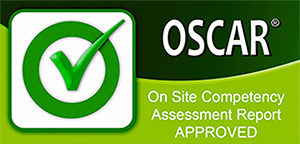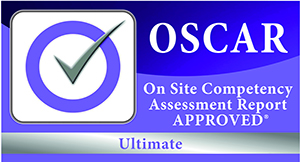DIPLOMA IN INSULATION AND BUILDING TREATMENTS
REFERENCE CODE
601/3040/4
COURSE LEVEL
NVQ Level 3
THIS COURSE IS AVAILABLE IN

Course Overview
Who is this qualification for?
This qualification is aimed at those who are involved in carrying out insulation or associated treatments to buildings; the qualification is at Level 3 and should be by those who are experienced and capable of dealing with a wide range of problems and situations and working with installations that have complex requirements.
Candidates may take a technical or supervisory role, particularly in relation to less-experienced colleagues. They will also work closely with customers/clients and have well-developed customer service skills. The qualification is designed to ensure that there is a high degree of flexibility to complete by having pathways for a wide range of occupational roles and specialisms.
All work must be carried out in accordance with Building Regulations and Industry recognised safe working practices, including the disposal of waste.
What is required from candidates?
GQA qualifications are made up of a number of units that have a credit value or credits. This qualification consists of 5 mandatory units and 6 pathways to cover occupational roles in External Wall Insulation, Cavity Wall Insulation, Loft insulation, Draught Proofing, Internal insulation and insulation to Framed Sections of Buildings. Candidates must complete all 5 mandatory units which have a total credit value of 23 credits and the required credits from the selected pathway. Dependent on the pathway selected the qualification has a total credit value ranging from 59 credits to 91 credits
The units are made up of the things those working in these job roles need to know to be able to do to carry out the work safely and correctly. These are called Learning Outcomes, and all must be met to achieve the unit.
Mandatory units Level Credit
Maintain, promote and monitor Health and Safety in the Insulation and Building Treatments working environment
Environmental Issues in the Insulation and Building Treatments working environment
Identify and confirm requirements, resources and methods of work to carry out workplace activity
Communication and teamwork in Insulation and Building Treatment activities
Understanding Building Regulations and Legislation that apply to the Insulation and Building
Treatments working environment
Pathway 1 External Wall Insulation
D/503/3042 Applying Surface Finishes to External Wall Insulation in the Workplace 2 19
Installing External Wall Insulation in the Workplace 2 19
Setting Out and Installing External Wall Insulation and Applying Surface Finishes to Buildings with Non-Routine or Complex Features
Pathway 2 Cavity Wall Insulation
Installing Cavity Wall Insulation in the Workplace 2 18
Setting Out and Installing Cavity Wall Insulation to Buildings with Non-Routine or Complex Features 3 24
Pathway 3 Loft Insulation
Installing Loft Insulation in the Workplace
Setting Out and Installing Loft Insulation to Buildings with Non-Routine or Complex Features
Pathway 4 Draught Proofing
Installing Draught-proofing to Openings in the Workplace 2 12
Setting Out and Installing Draught-Proofing to Openings with Non-Routine or Complex Features 3 30
Pathway 5 Internal Insulation to Walls, Floors or Ceilings
Installing Internal Insulation to Walls, Floors or Ceilings in the Workplace
Setting Out and Installing Internal Insulations to Walls, Floors or Ceilings to Buildings with Non-Routine or Complex Features
Pathway 6 Insulation to Framed Sections of Buildings
Installing Insulation to Framed Sections of Buildings in the Workplace 2 19
Setting Out and Installing Insulation to Framed Sections of Buildings with Complex or Non-Routine Features in the Workplace
Assessment Guidance
Evidence should show that you can complete all of the learning outcomes for each unit being taken.
Types of evidence:
Evidence of performance and knowledge is required. Evidence of performance should be demonstrated by activities and outcomes, and should be generated in the workplace only, unless indicated under potential sources of evidence (see below). Evidence of knowledge can be demonstrated though performance or by responding to questions.
Quantity of evidence:
Evidence should show that you can meet the requirements of the units in a way that demonstrates that the standards can be achieved consistently over an appropriate period of time.
Potential sources of evidence:
The main source of evidence for each unit will be observation of the candidate’s performance and knowledge demonstrated during the completion of the unit. This can be supplemented by the following types of physical or documentary evidence:
- Accident book/reporting system
- Photo/video evidence
- Safety records
- Work diaries
- Training records
- Timesheets
- Audio evidence
- Telephone logs
- Job specifications and documentations
- Delivery records
- Witness testimonies
- Equipment
- Correspondence with customers
- Prepared sites and structures
- Notes and memos
- Completed sites and structures
Please Note that photocopied or downloaded documents such as manufacturers or industry guidance, H&S policies, Risk Assessments etc, are not normally acceptable evidence for GQA qualifications unless accompanied by a record of a professional discussion or Assessor statement confirming candidate knowledge of the subject. If you are in any doubt about the validity of evidence, please contact Oscar Onsite Academy
Apply Now
Sound like the Apprenticeship for you? Why not fill in our online application form and we can start searching for your perfect Apprenticeship vacancy
Apply Now

